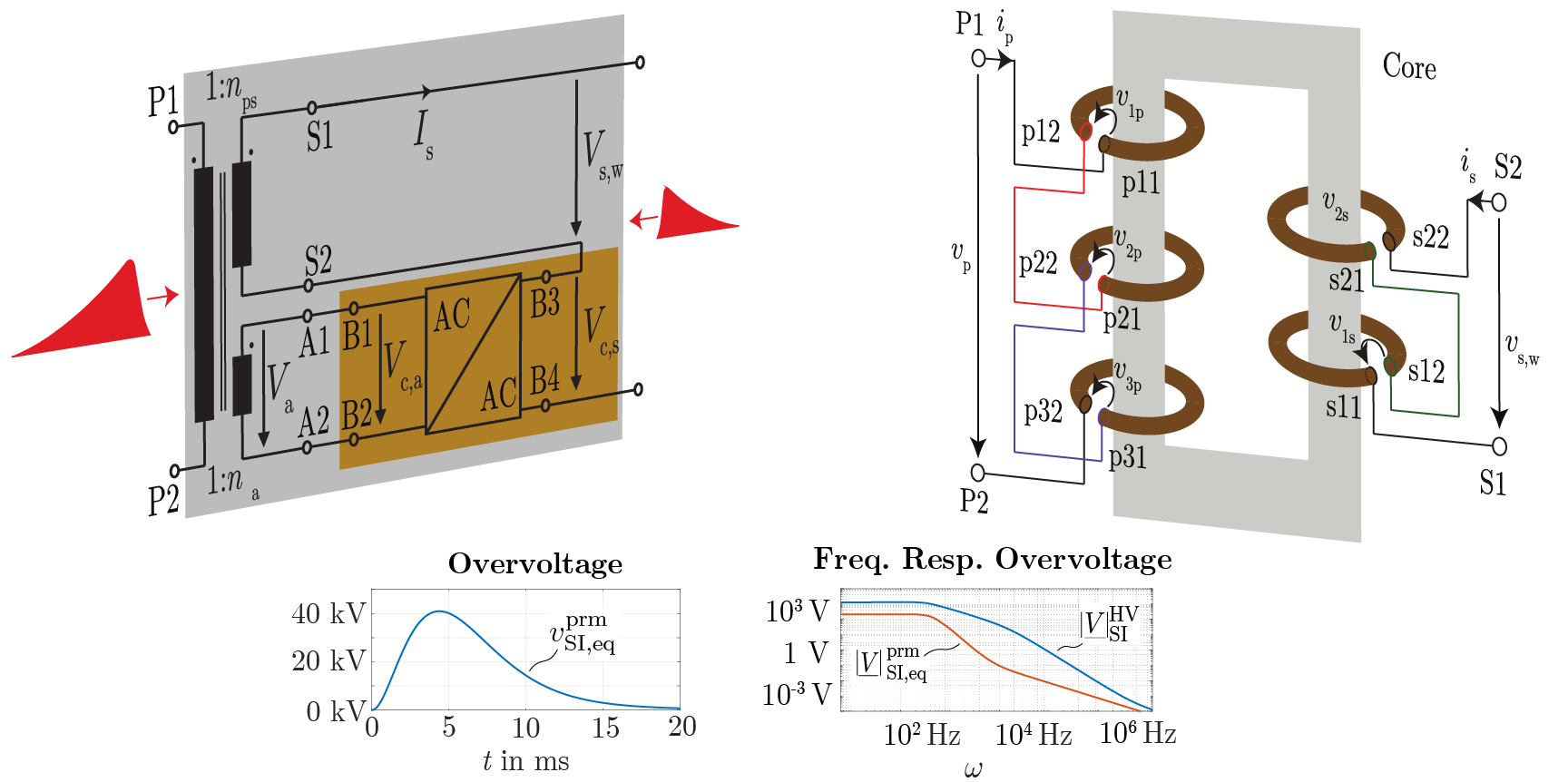Hybrid Transformer for High to Medium Voltage Grid Interfaces
The hybrid transformer combines a power transformer with a power electronics converter. A power transformer features high reliability and robustness, whereas a power electronics converter is characterized by its high flexibility.

The robustness of a power transformer is defined by its ability to withstand overvoltages and overcurrents. More specifically, a high voltage (HV) to medium voltage (MV) power transformer can sustain significant overvoltages and overcurrents without any damage, making it able to a return to full operation after experiencing voltage and current values much larger than its nominal values. Unfortunately, power transformers are limited by a fixed power rating and narrow stepwise voltage variation, made possible through a tap changer.
Power electronics converters enable fast voltage and current control, due to the fast switching capabilities of power semiconductors. On the other hand power semiconductors cannot conduct high overcurrents or withstand high overvoltages occurring on the HV and MV grid level. Therefore, power electronics converters that are connected to the grid require comprehensive and expensive protection measures.
The hybrid transformer unifies the advantages of a power transformer and a power electronics converter. The robustness of a power transformer reduces the protection effort for the power electronics converter. Additionally, a bypass allows the power transformer to be operated independently from the power electronics converter.
By combining flexibility and robustness, the hybrid transformer provides an interesting solution in making the power grid ready to handle power fluctuations introduced by renewable energy generation.
- Nominal Power Transformer: 45MVA
- Primary Voltage: 110kV
- Secondary Voltage: 20kV
- Nominal Power Converter: 4.5MVA
- Converter Voltage: 2kV
- Converter Current: 1.3kA